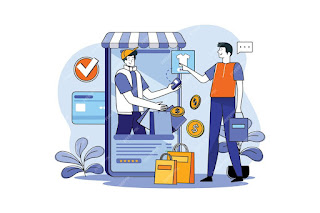How to Build a Based Grocery Delivery App like Blinkit 2024 in the USA
In recent years, the convenience of online grocery shopping has surged in popularity, especially with the emergence of innovative platforms like Blinkit. As more consumers seek efficient and hassle-free ways to shop for groceries, the demand for grocery delivery apps continues to rise. If you're looking to capitalize on this trend and create a successful grocery delivery app in the USA, this guide is for you. Join us as we break down the essential steps and strategies for building a standout app like Blinkit in 2024.
Understanding the Market Landscape
It's critical to comprehend the market environment and determine the essential features that will make your app stand out before starting development. The grocery delivery industry in the United States is fiercely competitive, with well-known companies like Instacart, Amazon Fresh, and Walmart Grocery leading the way. On the other hand, there is still a lot of room for new competitors to establish a niche by providing distinctive features and an improved user experience.
Defining Your Unique Selling Proposition (USP)
A unique selling point (USP) that appeals to your target demographic is essential for your grocery delivery service to stand out in a crowded market. Determine what makes your app unique from the competition, whether it's lightning-fast delivery times, an extensive assortment of specialized items, or special offers and discounts. One company that sets itself apart is Blinkit, which emphasizes hyperlocal delivery and customized suggestions based on the interests of the individual user.
Designing the User Experience (UX)
The user experience of an app is critical to its success. Every element of your app, including the checkout process and navigation, should be created with the customer in mind. To begin with, gather information about the requirements and problems of your target audience through user research. Then, before beginning development, construct wireframes and prototypes to see how the app will work. To improve your purchasing experience, pay close attention to elements like order monitoring, product recommendations, and search and filter choices.
Choosing the Right Technology Stack
Choosing the appropriate technology stack is crucial for developing a scalable and reliable application. By 2024, cutting-edge innovations in artificial intelligence (AI), machine learning, and cloud computing will have completely changed the grocery delivery app market. For scalability and flexibility, think about utilizing cloud-based platforms like AWS or Google Cloud. Use AI-powered algorithms to generate predictive analytics and individualized suggestions. Additionally, incorporate third-party APIs for functions like inventory management, geolocation, and payment processing.
Building the App Infrastructure
Now that you have your tech stack set up, you can begin developing the app infrastructure. Start by creating the backend systems that will enable the primary features of the app, like order processing, inventory management, and user identification. To build a scalable backend architecture that can manage thousands of concurrent users and transactions, use frameworks like Flask, Django, or Node.js. To enable communication between the app's frontend and backend, implement RESTful APIs.
Developing the Frontend Interface
Concentrate on creating the frontend interface after the backend infrastructure is in place. Select a mobile development framework such as Flutter or React Native to create cross-platform applications that function flawlessly on iOS and Android gadgets. Create a user interface that is both aesthetically pleasing and simple to use, reflecting your brand identity and making it simple for customers to browse products, place orders, and follow deliveries. To guarantee compatibility across many devices and screen sizes, thoroughly test the software.
Integrating Payment and Delivery Services
Any e-commerce app needs to process payments securely and seamlessly. To facilitate smooth transactions and support a variety of payment methods, such as credit/debit cards, digital wallets, and mobile payments, integrate well-known payment gateways like Stripe, PayPal, or Square. Furthermore, collaborate with dependable delivery firms or create your own fleet of vehicles to guarantee prompt and effective order fulfillment. Provide functionalities such as instantaneous tracking and alerts to ensure that users are informed at every stage.
Testing and Quality Assurance
It's essential to carry out thorough testing and quality assurance before releasing your software to find and fix any bugs or difficulties. To make sure all features function as intended and satisfy the specifications listed in the project scope, conduct functional testing. Real users should participate in usability testing to provide input and pinpoint areas that need work. Additionally, carry out security testing to find and fix any holes that can jeopardize user information or payment details.
Launching and Marketing Your App
It's time to release your grocery delivery app and begin promoting it to your target market now that testing has concluded and all systems are operational. Create a comprehensive marketing plan utilizing a variety of platforms, including influencer relationships, email marketing, social media, and app store optimization (ASO). To stimulate downloads and boost user engagement, emphasize the distinctive features and advantages of your app and provide exclusive deals or discounts. To assess the effectiveness of your marketing initiatives and make data-driven modifications as necessary, track key performance indicators (KPIs) such as user acquisition, retention, and lifetime value.
Conclusion
In 2024, developing a grocery delivery service similar to Blinkit will involve thorough preparation, astute execution, and an unwavering commitment to providing value to your users. In the cutthroat realm of online grocery shopping, you can build a unique app that delights users and encourages business success by comprehending the market landscape, defining your USP, creating a seamless user experience, selecting the ideal technology stack, and carrying out a thorough launch and marketing plan.

Comments
Post a Comment